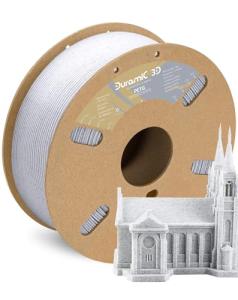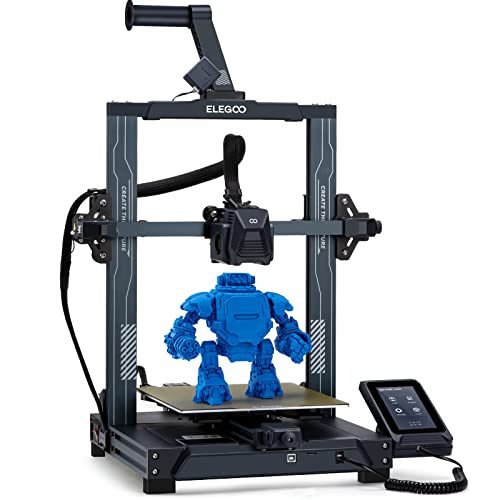First up is PLA, or Polylactic Acid. It’s a fan favorite for beginners because it’s super easy to work with. PLA is plant-based and has a low melting point, which means you can print without too much fuss. Plus, it comes in a rainbow of colors! If you're making prototypes or basic items, PLA is hard to beat.
Next on our list is ABS, or Acrylonitrile Butadiene Styrene. Think of this as the tough guy in the filament world. ABS is what LEGO bricks are made of, so you know it’s durable. It can handle higher temperatures and has great strength. The downside? It can be a bit tricky to print with, often needs a heated bed, and may give off odors, so use a well-ventilated space.
If you're looking for something with a bit of flexibility, TPU (Thermoplastic Polyurethane) is your go-to. This filament is rubbery and can stretch without breaking. It’s great for items like phone cases or toys where you want some give. Just keep in mind, it requires a specific setup to print smoothly.
Finally, there's PETG (Polyethylene Terephthalate Glycol). It combines the best of PLA and ABS, making it strong and easy to print. PETG is also resistant to moisture and chemicals, which makes it great for practical applications. If you want a sturdy finish without the printing hassle, PETG is definitely worth considering.
Choosing the Right Material for Your Projects
When it comes to 3D printing, the material you choose can make a huge difference in your project's outcome. There are several types of 3D printer filament to consider, and each has its unique properties. Picking the right one starts with understanding what you want to create. Are you printing something for decoration, functional use, or maybe for prototyping? This decision will help guide your choice.
PLA is super popular among beginners. It’s biodegradable and comes in all sorts of fun colors. Plus, it’s easy to print with and doesn’t require a heated bed, making it a great choice for most hobbyists. If you want something a bit sturdier, check out ABS. It’s tougher and can handle heat better, but it does have a bit of a learning curve since it can warp during printing. If you're ready to tackle ABS, make sure to have good ventilation, as the fumes aren't the best for breathing.
If you're looking for something different, flexible filaments like TPU can give you awesome results for projects that need some stretch. Think phone cases or wearables! On the other hand, if you’re aiming for professional-grade prints, PETG is a nice middle ground. It gives you strength, flexibility, and is resistant to moisture, which is perfect for those cool outdoor projects.
Don’t forget about specialty filaments, like wood-filled or metal-filled options, which can add a unique touch to your prints. These can be a bit tricky to work with, but the results can be stunning and definitely worth the effort! Just remember to keep your nozzle clean, as those extra materials can clog it up.
DURAMIC 3D PETG Marble Filament 1.75mm 1kg
Get stunning marble-like effects in your 3D prints with this easy-to-use PETG filament
Product information
$18.99 $16.14
Product Review Score
4.77 out of 5 stars
188 reviewsProduct links
Tips for Filament Storage and Care
Storing your 3D printer filament the right way can really make a difference in print quality. If your filament absorbs moisture, it can lead to clogs and poor prints. Here are some tips to keep it in top shape:
Inspect your filament regularly. If you notice any changes in color or texture, it might be best to toss it. Also, check for tangles before loading it into your printer. This will save you a lot of frustration during printing.
Lastly, if you have leftover filament after a project, don’t just toss it aside. Store it properly, and you can use it for future projects. Keeping your 3D printer filament in great condition will help you achieve the best results with every print.
AMOLEN Dual Color Silk Filament Bundle - 1.75mm
Upgrade your 3D printing experience with the AMOLEN Dual Color Silk Filament Bundle in 1.75mm size
Product information
$29.99
Product Review Score
4.94 out of 5 stars
25 reviewsProduct links
Common Filament Issues and How to Fix Them
3D printing can be a blast, but common filament issues can really mess up your flow. Don't worry, we’ve got your back! Here’s a quick guide to some of those pesky problems and how to fix them.
1. Clogged Nozzle: A clogged nozzle can turn your printing dreams into a nightmare. If your filament isn’t coming out, try cleaning the nozzle. You can use a needle or a nozzle cleaning kit. If that doesn’t cut it, raising the temperature a bit can help melt any stubborn bits stuck inside.
2. Poor Adhesion: If your print isn’t sticking to the bed, it can be super frustrating. Make sure your bed is level and the surface is clean. Try using a glue stick, blue tape, or specific adhesion aids to give your 3D printer filament a better grip. Sometimes a little extra heat on the bed can help too.
3. Stringing: Those pesky little strings between parts of your print can ruin a nice finish. To tackle this, lower the printing temperature slightly and increase the retraction settings in your slicer. Cleaning the nozzle before printing can also help reduce stringing.
4. Warping: Warping can happen when parts of your print lift off the bed. Keep an eye on your cooling settings—if the print cools too quickly, warping can occur. You might want to use a heated bed or an enclosure to keep those temps stable. Experiment with different types of 3D printer filament that are more warp-resistant too!





